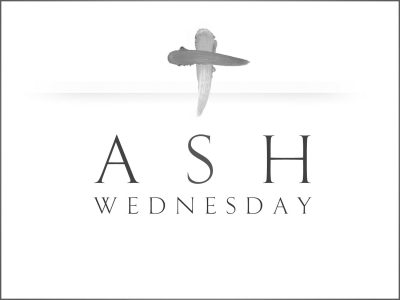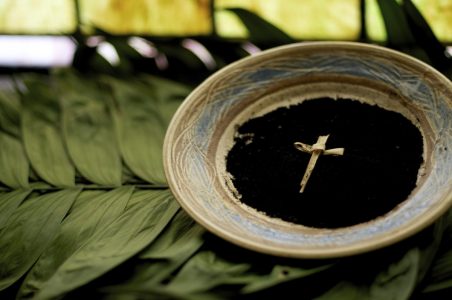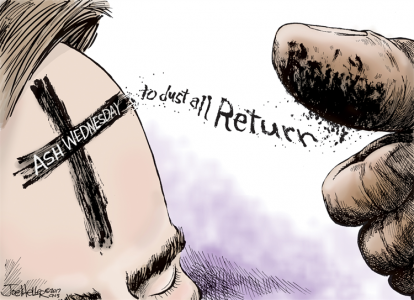ASH WEDNESDAY – MEANING AND ORIGIN
In Latin, Ash Wednesday is Feria quarta cinerum. This feast originated from the time of Pope Gregory I, since then, the Western Church celebrated to open the 40 days of Lent.

The characteristic of Ash Wednesday is the Blessing of the Ashes. Immediately after blessing, ashes use to sprinkle the heads of the faithful in the shape of the Cross, or to paint on their foreheads. The ashes that mention here are usually the ashes of the foliage used during the Palm Leaf Sunday of the previous year. Everybody burn these branches or leaves for Ash Wednesday. The believers will let Minister to sprinkle with ashes on their heads or paint a cross on their foreheads. This action expresses their repentance and humility: they recognize the condition of ashes and dust as well as their sinful body.
About the Lent, which opens with Ash Wednesday, is a reminder of the 40 days Jesus spent in the desert for fasting and prayer (Mt 4,2tt). And it is also as a preparation for the Great Easter.
1. History of Ash Wednesday:
The use of ashes to sprinkle the heads or cover the bodies to show remorse has existed since the Old Testament time.
The book of Jonah recounts: “Jonah began to go into the city, took one day of the journey, and proclaimed: in 40 days, Nineveh will be demolished. Nineveh’s people believe in God, they proclaimed to fast and wear coarse cloth, from adults to children. The message came to the king of Nineveh, he left the throne, took off his cloak, put on coarse cloth, and sat on the ashes” (Gn 3: 4-6).
In addition, the book of Daniel records the following words of the Prophet Daniel: “I fasted, put on coarse cloth, and sprinkled ashes on my head, then raised my face to God, plead with the plea” (Dn 9.3).
In the Christianity, from the first centuries, people who were punished had to perform acts of public repentance for committing one or more serious sin. From the beginning of Lent, they had to wear coarse cloth, also known as repentant cloth. These clothes are usually woven from hemp bark in a very primitive form like sacks. Besides, they have to cover or sprinkle ashes on themselves. At the Gallia Church, in France, they based on the sight of Adam and Eve being driven out of the Garden of Eden after committing sins (Gen 3tt). On Ash Wednesday, people who have committed serious sin will temporarily banish from the Church. And it was only on Holy Thursday, they were again accepted into the Church, from then they could receive Holy Communion.
Around the end of the tenth century, the above customs gradually disappeared, instead, people conducted the practice of sprinkling ashes on all the faithful to show solidarity with the sinners.

The first prayer in the Blessing of the Ashes originated in the 11th century. In addition, the burning branches or leaves used in the Palm Sunday of the previous year to make ashes originated in the 12th century. In the Benevent Community (1091), Pope Urban II ordered the whole Church to apply the ritual of sprinkling ashes on the heads of the faithful.
Initially, people sprinkled ashes in the form of a cross on a men’s head, while with women, they marked the cross on their forehead. Today, the two forms above are no longer dependent on gender but the Ministers. The Minister may choose one of two ways. By attending the Blessing of the Ashes, believers are called to recall their past and to reform (reform in the Greek is: μετάνοια metánoia, means to change the way of thinking).
Besides, Ash Wednesday also celebrates as the closing day of the Carnival season. According to the Bible, people who live base on the “flesh” will prevent from living according to the Spirit (cf. Rm 8.5tt). The abandonment of the flesh way of life during Lent will symbolize through fasting. This helps people to remember their spiritual life as well as God. In the Catholic Church, Ash Wednesday is one of two fasting days: the faithful must eat vegetarian meal on this day.
2. Liturgy on Ash Wednesday:
As the rule, sprinkling ashes to the heads of the faithful will take place during the Mass of Ash Wednesday. After the sermon, the Priest will bless the ashes through a prayer and through sprinkling the Holy Water on the ashes. Then, he uses the blessed ashes to sprinkle to the heads of the believers in the form of the Cross, or uses ashes to paint the Cross on their foreheads. The faithful, in turn, go up in front of the Minister to be anointed ashes to the head. While sprinkle ashes to the heads of each believer, the Minister will say: “Remember, you are just ashes and will return to the ashes” or “Repent and believe in the Gospel” (Mk 1:15).

The Prayer of the Faithful will read shortly after the end of the ceremony of sprinkling ashes.
The blessing and anointing of ashes can also take place outside of Mass. In this case, people will begin with the Liturgy of the Word of Ash Wednesday, accompanied with an introduction and a prayer. There will be a response between the readings, and there may be a sharing of the Word of God after the Gospel. Then, the Minister will bless and anoint the ashes for the faithful. After anointing the ashes, everybody can read the prayer of the faithful, followed with the final prayer and blessing.
In short, the Blessing of the Ashes reminds the faithful of an important moment that is beginning to relate to their salvation – Lent. At the same time, this initiation rite offers the faithful a journey to follow during Lent. That journey is the practice of actions that show remorse and charity. On the other hand, the faithful must also go into a deep remorse, reflecting on the human condition, faults and the urgent need to return, to renew their lives.






